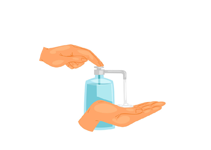Turpentine Oil
Turpentine oil is primarily valued for its therapeutic applications, particularly for topical use. It provides analgesic and rubefacient effects, aiding in muscle and joint pain relief by stimulating blood circulation. Additionally, its vapors are used in chest rubs to act as a decongestant, helping clear respiratory congestion. However, due to its toxicity, turpentine oil should only be used externally, in small, diluted amounts, and never ingested. It is used well under a Doctor's supervision.
Medicine Not Available for Turpentine Oil
Uses of Turpentine Oil
- Relieves Joint & Muscle Pain: Relieve joint and muscle pain by stimulating blood circulation. Its warming effect soothes stiffness, arthritis, and muscle soreness. It makes it a popular ingredient in massage oils and pain-relief ointments to provide quick, localized relief for aching muscles and joints.
- Supports Respiratory Health: Easing breathing difficulties from coughs, colds, and congestion. When used in chest rubs or inhalants, it helps clear mucus and makes breathing easier, giving relief and improving respiratory comfort.
- Reduces Inflammation: Reduce swelling and redness in muscles, joints, and skin. Its soothing properties help manage inflammatory conditions such as arthritis. When applied externally and regularly, it helps alleviate discomfort and supports the body's natural anti-inflammatory processes.
- Supports Wound Healing: Heal minor cuts and skin infections. When diluted and applied, it cleans the area, prevents infection, and supports faster skin recovery. Traditionally used for its natural antiseptic properties, it promotes the body’s natural healing process.
- Provides Stress Relief: Promote relaxation and reduce stress by inhaling its aroma. When used in aromatherapy, it helps to enhance mental clarity, restore balance, and improve mood. This natural essential oil offers a calming effect that supports overall emotional well-being.
How Turpentine Oil Works
When applied topically, Turpentine Oil stimulates blood flow to the area and warms the skin, helping reduce pain and inflammation. As an inhalant, it works as an expectorant to loosen mucus in the respiratory tract.
Benefits of Turpentine Oil
- Natural pain reliever
- Soothes sore muscles and joints
- Helps in relieving chest congestion
- Supports respiratory health
- Provides warming and soothing effect
How to Take Turpentine Oil
Use Turpentine Oil externally only. Apply a few drops to the affected area and gently massage. For respiratory relief, use it in steam inhalation or vapor rubs. Do not apply to broken skin or ingest unless specifically directed by a doctor.
Type of Dosage Available
- Topical oil
- Ointment or balm
- Inhalation drops (in formulations)
Side Effects of Turpentine Oil
- Skin irritation or redness
- Burning sensation at application site
- Allergic reactions (rare)
- Nausea or headache if inhaled excessively
- Toxic if swallowed
Safety Advice
- For external use only
- Do not apply on wounds or damaged skin
- Keep away from children
- Avoid contact with eyes and mucous membranes
- Consult a doctor if pregnant, breastfeeding, or using on children
Frequently Asked Questions (FAQs)
Q: What is Turpentine Oil used for?
A: It is used for relieving muscle pain, joint inflammation, and respiratory issues like chest congestion.
Q: Can Turpentine Oil be ingested?
A: No, it should not be ingested unless prescribed and supervised by a medical professional.
Q: Is it safe to use on children?
A: Use on children only under a doctor `s guidance, as their skin may be more sensitive.
Q: Can I use Turpentine Oil during pregnancy?
A: It is best to consult a healthcare provider before using it during pregnancy.
Q: How often can I apply Turpentine Oil?
A: It can be applied 2-3 times a day on the affected area, but not on open or irritated skin.
Related Salt
Download India's most affordable pharmacy app
- Compare with medicine prices
- Save upto 90% on your medicine bills

Temperature Controlled storage and delivery

Regular Sanitization

Disinfected Packaging















 Added!
Added!